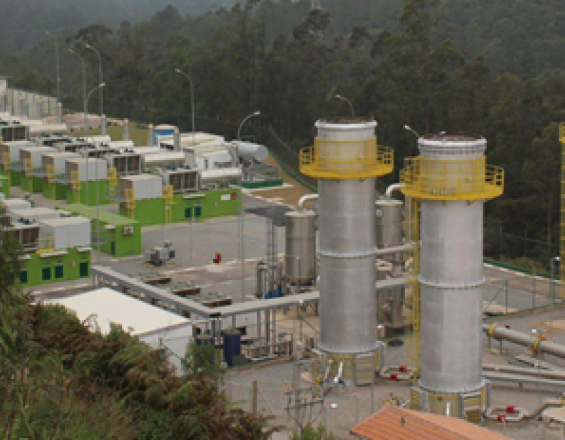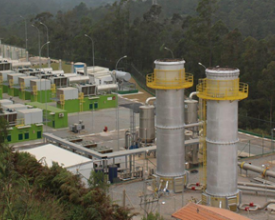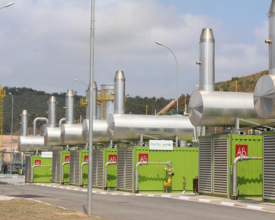
Power Generation in a Landfill Biogas-Fueled Thermoelectric Power Plant

Termoverde Caieiras generates electricity from the biogas of Urban Solid Waste (USW) deposited in the landfill, making it the largest thermoelectric plant powered by landfill biogas in Brazil, one of the largest in the world, with an installed capacity of 29.5 MW and occupying an area of 15,000 m². It is one of the largest in the world, with an installed capacity of 29.5 MW and occupies an area of 15,000 sq. m. Located at the Essencis Caieiras Sustainable Valorization Unit (UVS), the plant transforms the biogas produced by the decomposition of organic waste deposited in the landfill into electrical energy. Being composed of about 50% methane (CH4), biogas is directly related to the greenhouse effect, having a global warming potential 28 times higher than CO2. The generation of energy from the CH4 contained in biogas is a sustainable way of utilizing landfill gases, while at the same time contributing to reducing emissions in the waste sector.
Impacts
- Termoverde Caieiras obtained Aneel's authorization to start its commercial operation in July 2016, consolidating the Solví Group as the largest in Brazil in the landfill biogas energy use segment, demonstrating its commitment to social and environmental responsibility.
- The biogas emitted into the atmosphere is 28 times more polluting than carbon dioxide gas. This gas is recovered and transformed into energy, a doubly green project since it stops emitting a harmful gas and generates electricity, saving other fossil fuel sources.
- This energy generation also generates carbon credits, promoting a circular economy and a more sustainable city.
- To replicate the solution, the municipality needs to take into account the National Solid Waste Plan (PNRS), giving the correct destination to the MSW generated. The landfill must have the necessary scale for the generation of biogas to allow the installation of a thermoelectric plant and the consequent generation of energy.




